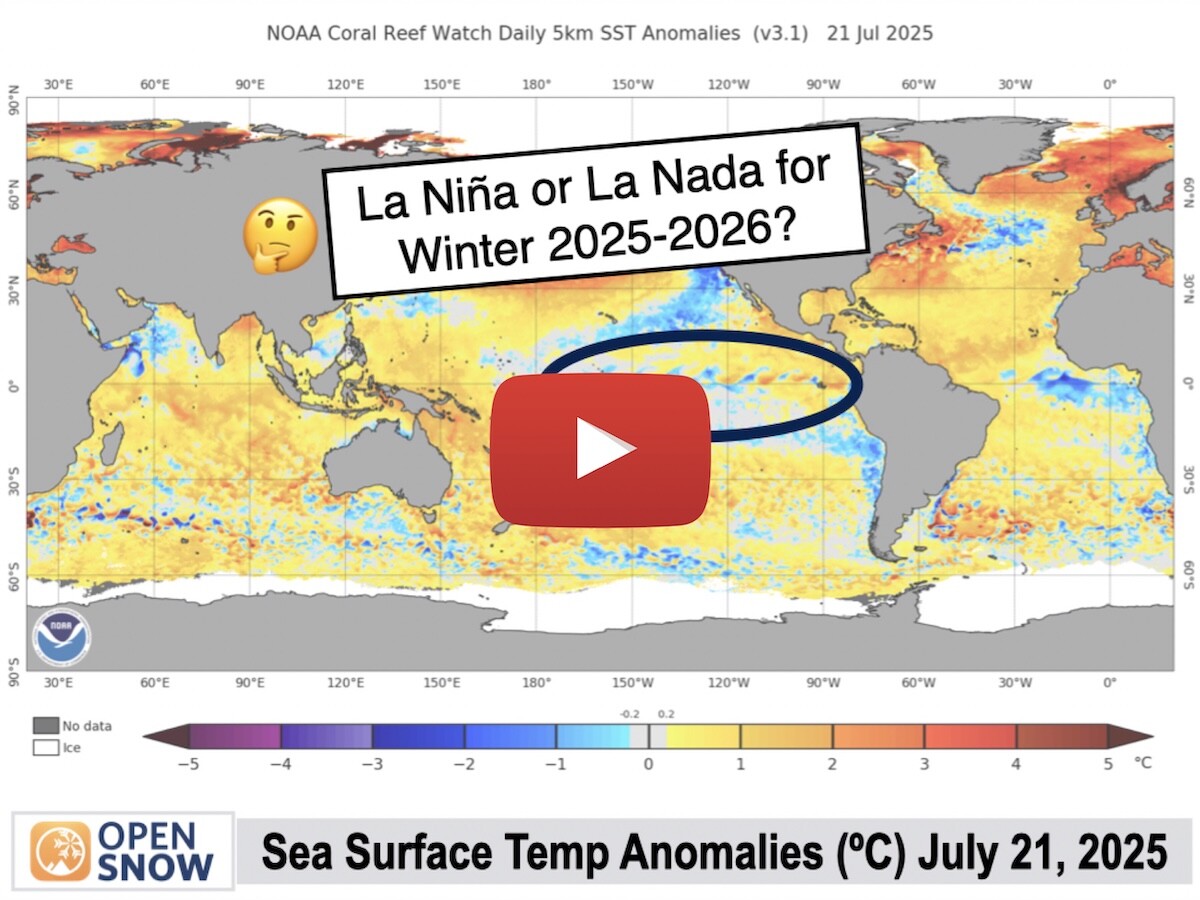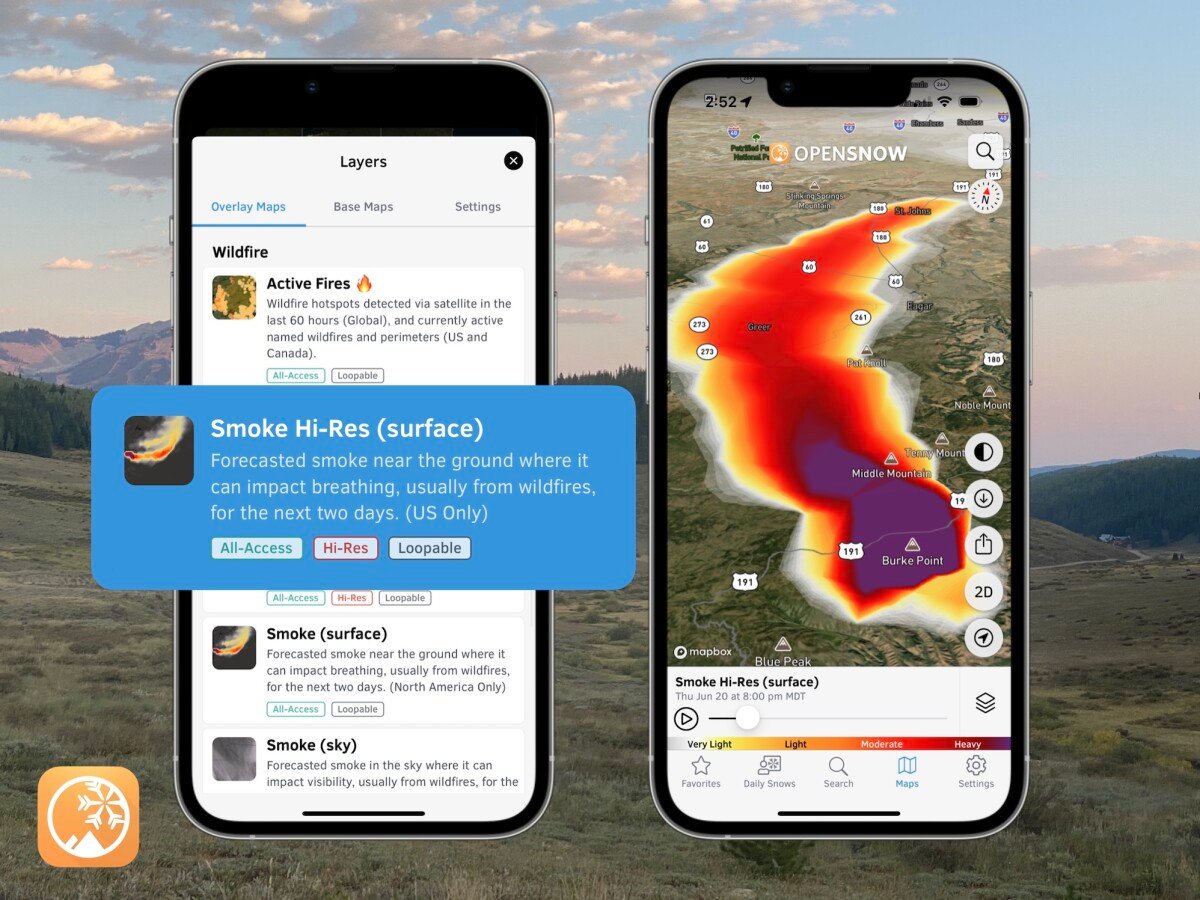Western US Daily Snow

By Alan Smith, Meteorologist Posted 3 years ago July 18, 2022
Monsoon thunderstorms across the Southwest
Summary
An active monsoon will continue across the Southwest early this week with numerous thunderstorms expected from California to Colorado, along with a risk of flash flooding in canyon regions. Meanwhile, a trough moving across the Northern Rockies is resulting in dry and windy conditions along with an uptick in fire danger and fire activity.
Short Term Forecast
Forecast Highlights:
- Thunderstorm activity favors Colorado, Utah, Arizona, New Mexico, Nevada, and California early this week.
- Highest flash flood threat for slot canyons and dry washes on Monday and Tuesday.
- Fire activity increasing across the Northern Rockies due to dry and windy conditions.
- Monsoon weakens a bit on Thursday and Friday before strengthening again this weekend.
- Above-average warmth prevails for most with only a few brief exceptions.
Synopsis:
A trough of low pressure is moving across Montana on Monday after producing some showers over the Cascades and around Glacier NP. However, drier air is now arriving on the southern end of this trough along with gusty winds, resulting in elevated fire concerns. Further south, an active monsoonal flow is in place across the Southwest from the Sierra to the Colorado Rockies.

Monsoon Update:
A relatively strong jet stream for this time of year is moving across the Northern Rockies on Monday and this is helping to suppress monsoonal moisture further to the south compared to recent days. The flow of moisture has also "spread out" a bit and is extending well into California, where thunderstorms have developed on Monday.
Storms are also widespread across the Great Basin, Southwest, and Southern Rockies as a result of this pattern with precipitable water anomalies (the amount of water vapor in the atmosphere) ranging from 150-200%.

A similar pattern is expected on Tuesday, then the monsoon will shift east a bit on Wednesday with decreasing thunderstorm activity across California, Nevada, Utah, and Arizona, while the focus of thunderstorm activity shifts into Colorado and New Mexico.
Here are the projected 3-day rain totals from Monday through Wednesday. Keep in mind the rainfall showing up across the Cascades and Northern Rockies already fell earlier in the day on Monday and conditions are now drying out.

Flash Flood Outlook:
There is a threat of flash flooding across most of the Southwest from California to Colorado on Monday and Tuesday. By Wednesday, the flash flooding threat will mainly be confined to Colorado, New Mexico, Arizona, and Eastern Utah.
Slot canyons, dry washes, steep/rocky terrain, and burn scars will see the highest risk of flash flooding.
The National Weather Service in Utah has a good product that highlights the flash flood potential across popular canyon country recreation areas. Here is the latest outlook as of Monday afternoon.

Temperature Outlook:
A cold front associated with the trough over Montana has resulted in a substantial cooldown across the Pacific Northwest and Northern Rockies, while the Great Basin Central Rockies will also see a slight and brief cooldown into Tuesday.
However, temperatures will quickly rebound over the second half of the week with above-average temperatures expected. Most of the West will see above-average warmth over the next 5 days, but the highest anomalies are expected east of the Rockies over the Great Plains where a brutal heat wave will occur this week.

Fire and Smoke Outlook:
The Washburn Fire is still burning in Yosemite, but fire behavior has calmed down quite a bit and smoke has become more localized for the time being.
Meanwhile, strong winds and decreasing humidity across the Northern Rockies early this week have resulted in an increase in fire danger. As of Monday afternoon, a new fire called the Moose Fire was growing rapidly near Salmon, Idaho.
Our smoke models are projecting smoke from the Moose Fire to track southeastward with a weak cold front overnight on Monday night and reach the Greater Yellowstone and Jackson Hole region.

Winds are expected to be lighter on Tuesday and in the days to follow, but in terms of fuels and relative humidity, fire danger will remain elevated across California, Nevada, Idaho, Wyoming, and Montana with lower fire danger across the Southwest, Southern Rockies, and Cascades.
Extended Forecast
Outlook for Thursday (7/21) to Sunday (7/24):
A trough moving across the Northwest and Northern Rockies on Thursday and Friday will help to weaken the monsoon a bit, suppressing moisture further south. We will still see some thunderstorms across the Four Corners region, but activity will be more isolated and should favor New Mexico and Southern Colorado.
Meanwhile, the Northern Rockies (in particular the Glacier region), could also see some showers and thunderstorms on Thursday and Friday.

Heading into the weekend, the monsoon will strengthen again with above-average moisture levels expected throughout the Four Corners region as well as Southern Nevada and Southern California. As a result, thunderstorm activity will become more widespread across the Southwest and Southern Rockies and flash flood potential will increase as well.

Outlook for Monday (7/25) to Monday (8/1):
During the last week of August, a ridge of high pressure is projected to shift westward toward the Pacific Coast, likely resulting in well above average temperatures across the Pacific Northwest and California. Meanwhile, Arizona could see "cool" temperature anomalies thanks to an active monsoon.

The Four Corners region will remain favored for abundant monsoonal moisture and above-average rainfall and thunderstorm activity, with Arizona, Southern Utah, Southwest Colorado, and Northwest New Mexico looking like the most favored areas. Southern California and Nevada could see some action from time to time as well.
Drier conditions are likely to prevail across the Northwest and Northern Rockies.

Thanks so much for reading! Next update on Wednesday (7/20).
ALAN SMITH
About Our Forecaster




